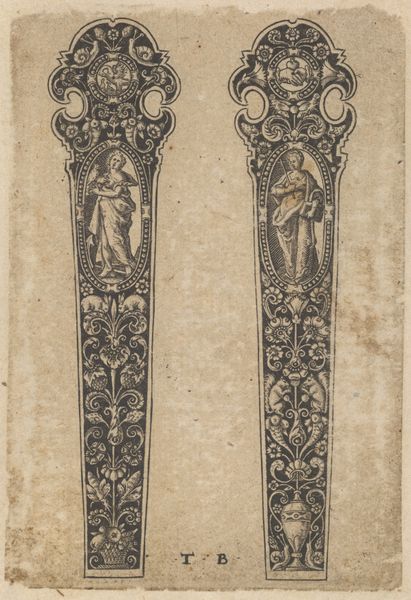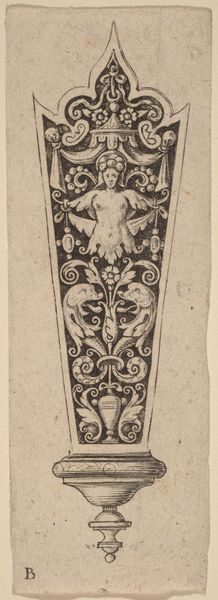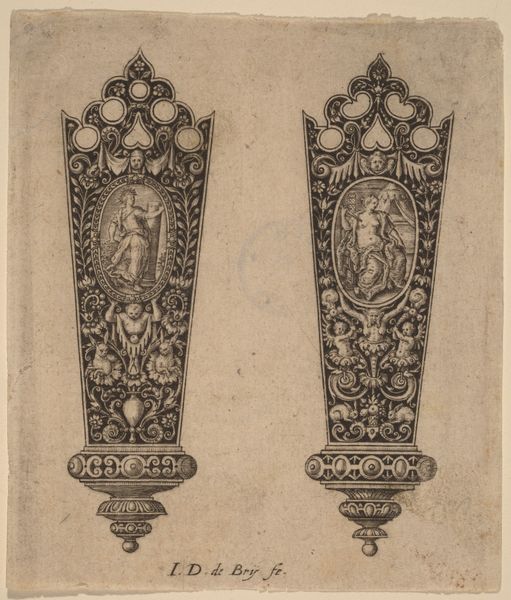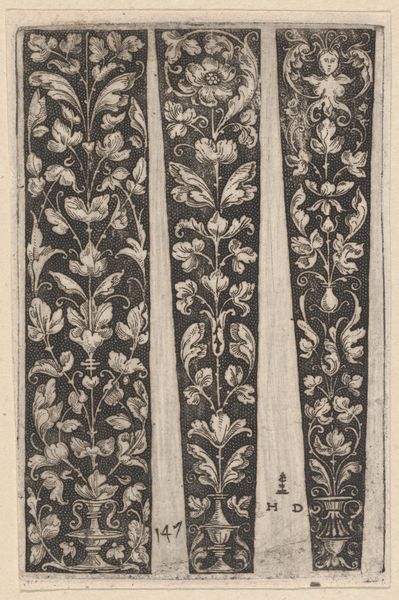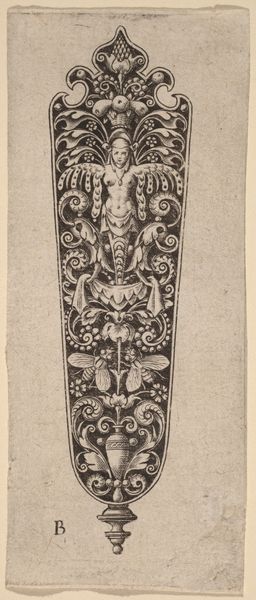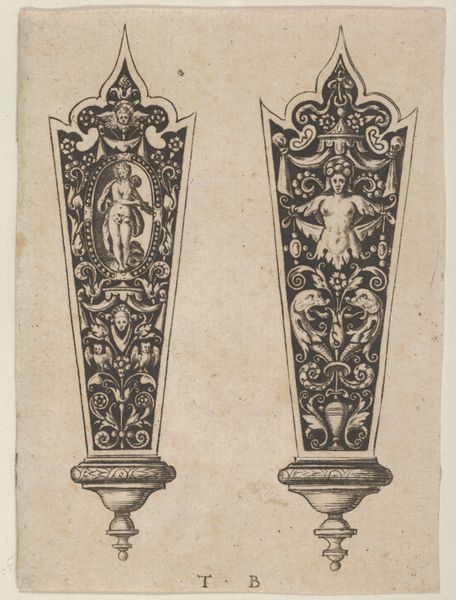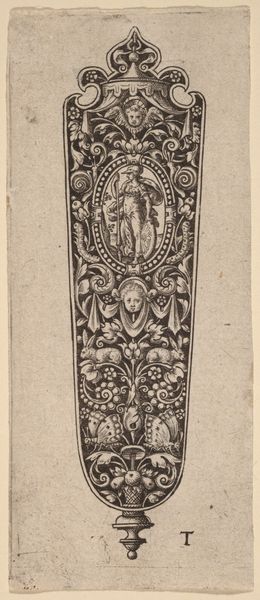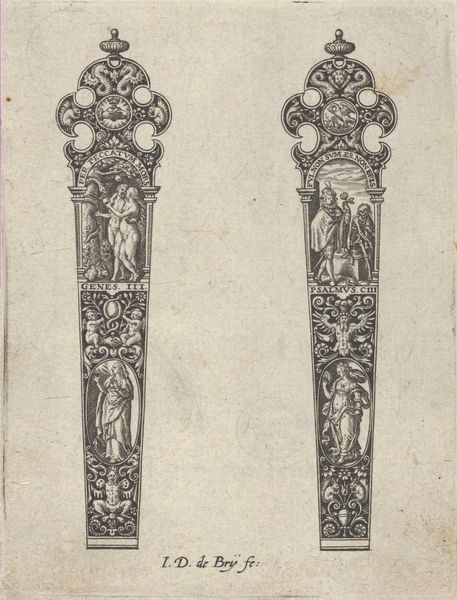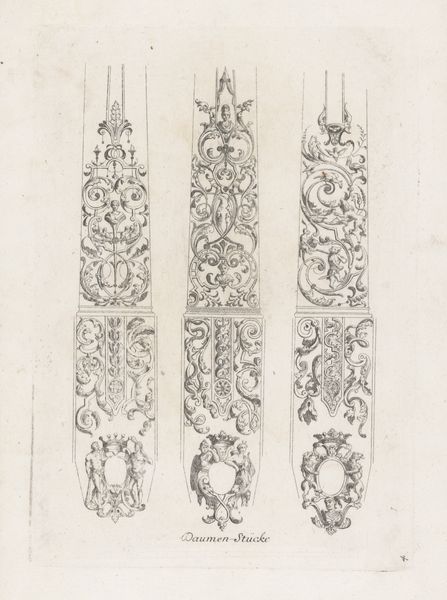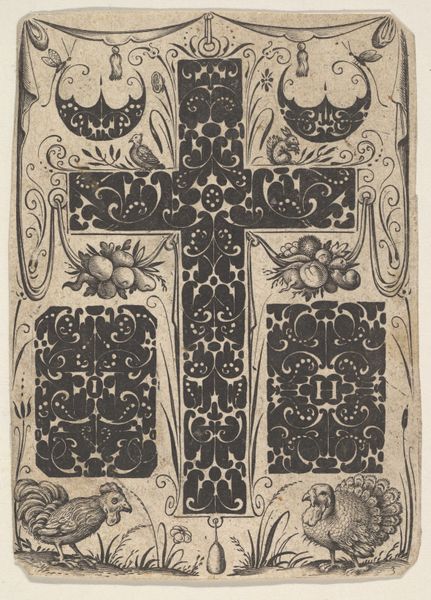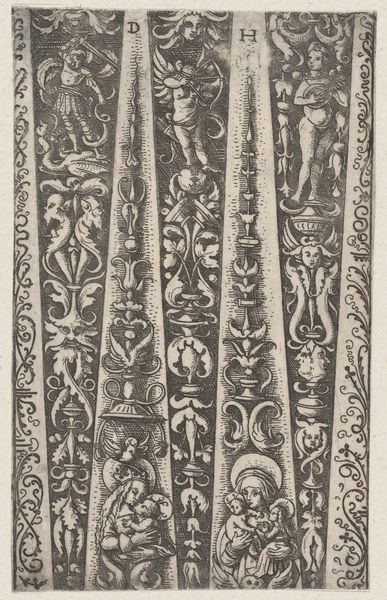
drawing, graphic-art, print, engraving
#
drawing
#
graphic-art
#
pen drawing
# print
#
form
#
11_renaissance
#
line
#
northern-renaissance
#
decorative-art
#
engraving
Dimensions: Sheet: 3 5/8 × 2 5/8 in. (9.2 × 6.6 cm)
Copyright: Public Domain
Curator: This engraving, from around 1580 to 1600, presents designs for sword or dagger handles by Theodor de Bry, now residing here at The Met. Editor: My immediate impression is how densely ornamented they are! There's hardly any empty space, it feels quite Baroque even though it precedes the period. Curator: De Bry was indeed a master of embellishment, as we see through his careful lines rendered in pen, ink and engraving. These drawings highlight the intense labour that went into creating even utilitarian objects during the Renaissance. Editor: Utilitarian objects that were nevertheless infused with the potent symbolism of the era! Take for instance the female figure in classical garb on the left, is that meant to be Minerva? And opposite, we have a winged male. How would their gender have affected a consumer's perception of the weapon? Curator: An interesting observation on potential interpretations regarding gender. I am more intrigued by the actual process of applying these designs to a crafted object. The etches themselves may have also provided the hilt-makers a ready reference of models. Editor: Right, and considering that sword hilts would have been objects worn publicly, they would have functioned as important symbols of social status and identity for their owners. Look closer, aren't those grotesque masks popular motifs in the Renaissance? Curator: They're not merely grotesque, are they? The masks underscore that the piece should be viewed within the historical and societal conventions prevalent at that period. It calls into the context that informed its development. Editor: Well, viewing it as a product, these designs hint at a whole industry that catered to the wealthy and powerful. They certainly remind us of the intersection of artistic skill and practical craftmanship during the Renaissance, no? Curator: Exactly. I find myself marveling at the synthesis of visual refinement with manual fabrication. It shows the crucial significance and significance of the material procedures underpinning creative endeavours. Editor: These handles, both ornate and functional, provoke complex queries about status, labor and artistic production. Curator: Ultimately it reminds us of the countless skilled labourers whose efforts shaped the objects through time.
Comments
No comments
Be the first to comment and join the conversation on the ultimate creative platform.
